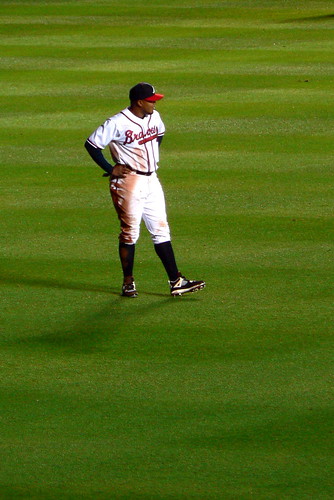 Arizona's take:
Arizona's take:Dan Haren - Top tier pitcher who has been eating innings for three years straight. His home run totals are a little worrisome but the switch to the weaker league and one of the worst hitting divisions should keep his numbers around what they were last year.
Connor Robertson - A potential bullpen piece who had dominated minors until he struggled in AAA last year. He's 25 and probably won't get much better, but Robertson is certainly capable of finding a role in Arizona's bullpen if he bounces back well.
Oakland's take:
Dana Eveland - Don't be fooled by the effeminate name, Eveland's a big lefty who could easily be in Oakland's rotation to start the season. Injuries hampered him a bit last year but still maintained a sub-2.00 ERA in AAA last year. Eveland's got strong stuff but he has yet to translate it to the major leagues, getting hammered in multiple stints with the D-Backs and Brewers. Overcoming some weight problems may give him the boost to break into Oakland's rotation this spring.
Greg Smith - A moderate lefty who is ready to make the jumps to the majors. He needs a decent third-pitch behind his quality fastball and curveball, the development of which should allow him to warrant a spot in the back-end of the A's staff.
Aaron Cunningham - A Melky Cabrera-esque prospect who can play all three outfield spots and hits for average, a little power, and can run. Cunningham's not as strong defensively as Cabrera and he'll be 22 when he starts the year in AA or AAA, but he's a top-notch utility outfielder. It's unlikely that he'll be able to maintain his power numbers in the majors but his speed and good average should keep in the pros.
Carlos Gonzalez - Gonzalez was yet another top-quality outfield prospect in Arizona's system and with him being less than a year away from MLB ready it made sense to include him in this deal. Gonzalez hits for average, power, has a cannon of an arm in right and was ranked as the 23rd best prospect by MILB (though a lot of that ranking was based on ceiling rather than performance). Gonzalez will definitely be spending some amount of time in the majors in 2008, it's just a matter of how hot of start he gets in AAA.
Brett Anderson - The 6'4" southpaw put up impressive numbers out of high school in A. He's had some injuries and there have been concerns about his pitching motion but despite these minor issues Anderson has a lot of potential at the tender age of 19.
Chris Carter - The D-Backs ship of Carter after acquiring from the White Sox in the Carlos Quentin deal. Carter is a poor defensive first-baseman who mashed his way through A-ball last year with 25 home runs. He does hit for some average and walks fairly often to compliment his power, but it's his ability to hit the long ball that should eventually get him to the major league level.
All of the guys en route to Oakland are at least B-level prospects and while none of them make your mouth water, the A's got more than adequate value for Haren. I was always hoping the Yankees would make a play for Haren but given what Arizona offered the Yanks would've had to start with at least Horne, Marquez, and Jackson. The D-Backs, despite their massive out performance of their Pythagorean last year look in great shape to take the NL West again.





